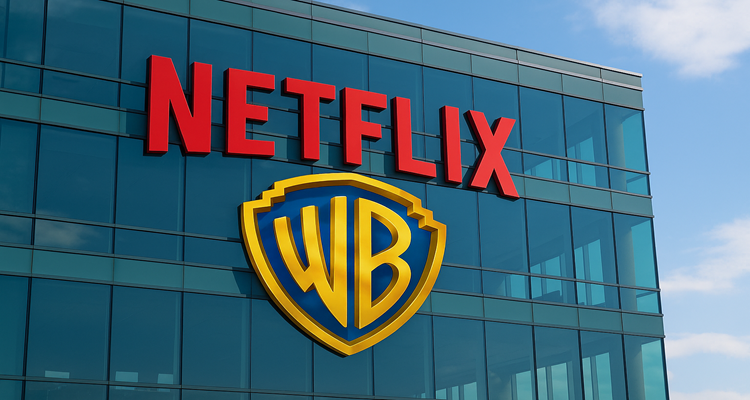Inside the Smart Home of 2025: What’s New and What’s Next
Explore the future of smart living inside the connected homes of 2025, where AI, automation, and personalization reshape how we live, work, and relax.
1. Introduction: Welcome to the Home of the Future
Imagine walking into your home and it instantly adjusts to your mood. Lights dim, your favorite playlist starts, and dinner begins cooking—without lifting a finger. This is not science fiction—it’s everyday life in the smart home of 2025.
With groundbreaking integration of artificial intelligence, machine learning, and connected ecosystems, smart homes have evolved from gadget-filled novelties to intuitive living environments that redefine comfort, energy efficiency, and personal well-being.
2. Context & Background: From Automation to Anticipation
Smart homes have come a long way since the first Wi-Fi-enabled thermostats and smart speakers hit the market over a decade ago. In the early 2020s, most smart devices operated in silos—lights, security cameras, or appliances controlled by separate apps. But now, the integration has reached a new level.
By 2025, advances in edge computing, 5G connectivity, and AI-powered home hubs have allowed devices to not just respond to commands but anticipate them. The home no longer reacts—it thinks.
3. Main Developments: The Core of 2025’s Smart Homes
1. AI-Powered Personalization
Smart homes now learn from occupants’ routines, preferences, and biometrics. Using generative AI models similar to those powering large-scale language systems, homes customize everything—from lighting and air quality to daily schedules.
Example: Your home knows when you’re stressed based on vocal tone, heart rate (via wearable integrations), and recent calendar load. It responds with calming music, a lavender-scented mist, and lowered room temperature.
2. Interoperability and Open Ecosystems
Thanks to the widespread adoption of the Matter protocol, devices from different manufacturers finally talk to each other seamlessly. Homeowners no longer face brand lock-in—Samsung, Apple, Google, and Amazon devices all coexist in harmony.
3. Predictive Maintenance and Energy Efficiency
Smart systems now detect anomalies in appliances before breakdowns occur. Your HVAC system can signal an upcoming issue days in advance. Meanwhile, AI-driven energy monitoring minimizes power use during peak hours, cutting bills and carbon footprints.
4. Smart Kitchens and Food Tech
Refrigerators track inventory and suggest recipes based on what’s available. Smart ovens use computer vision to perfectly cook your meal. Voice-controlled faucets dispense precise water amounts and temperatures, and AI-powered meal planning tools align with health goals.
5. Integrated Health and Wellness
With health-tech integration, homes now monitor air quality, sleep cycles, hydration levels, and even mental wellness indicators. Smart mirrors provide health data summaries each morning, and in-home diagnostics kits connect directly to telehealth providers.
6. Voice and Gesture Control, Evolved
Natural language processing (NLP) systems are now context-aware, capable of handling nuanced voice commands and even gestures. Visual sensors and embedded microphones maintain privacy while ensuring responsiveness throughout the home.
7. Autonomous Cleaning and Delivery
Robotic vacuums and lawnmowers now use LIDAR and spatial mapping for surgical precision. Smart mailboxes accept deliveries securely, and some homes have delivery drone landing pads integrated into their roofs.
4. Expert Insight and Public Reaction
Dr. Anita Ramesh, a smart-home systems researcher at the Indian Institute of Technology, observes:
“2025 marks the turning point where smart homes move from being assistive to truly adaptive. It’s about proactive wellbeing, not just convenience.”
Consumers, too, are noticing the shift. A 2025 Deloitte survey shows 72% of new homeowners in urban areas rate integrated smart technology as a top priority, compared to just 43% in 2021.
Ravi Sharma, a Bangalore-based tech entrepreneur, adds:
“I wake up to a home that syncs my calendar, plays my favorite morning news brief, and even preheats the shower. It’s not luxury anymore—it’s lifestyle.”
5. Impact & Implications: The Road Ahead
Privacy and Security
As homes grow smarter, concerns about data privacy have intensified. Manufacturers now face pressure to offer edge processing (local data handling) and end-to-end encryption. Regulations are also tightening, especially around health data collected at home.
Affordability and Accessibility
While premium features are more accessible, affordability remains a barrier. However, government smart-home subsidies and DIY modular kits are helping bridge the digital divide, particularly in emerging markets.
Environmental Sustainability
The 2025 smart home is designed with sustainability in mind. From solar integration to smart grids and water recycling systems, homes actively contribute to greener living.
Cultural and Social Shifts
Culturally, smart homes are transforming how we interact with our living spaces. Elderly care, remote work, and hybrid education are all being reshaped by ambient intelligence, making homes not just places to live, but platforms for productivity and care.
6. Conclusion: Living Tomorrow Today
The smart home of 2025 isn’t about having the latest gadget—it’s about having a home that listens, learns, and evolves with you. It’s about turning daily routines into seamless, secure, and personalized experiences. As technology continues to blend more invisibly into the walls, ceilings, and appliances around us, our homes are no longer just shelters—they are sentient spaces.
And the journey has just begun.
Disclaimer: This article is for informational purposes only. Features and technologies described reflect current industry trends and projections as of 2025 and may vary by region and manufacturer.











